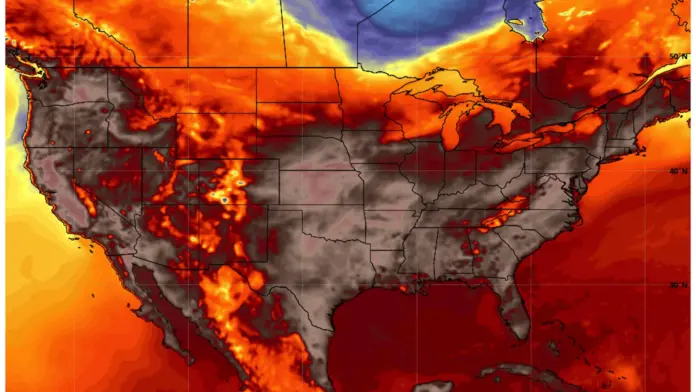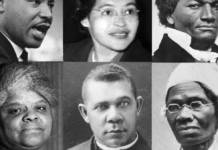The United States is experiencing a strong and widespread heat wave that has left millions of people with heat advisories or extreme heat warnings. Whether in the test markets of Arizona or New York, the number of cities as well as rural communities exposed to potentially dangerous high temperatures is threatening the health systems, power grids, and even societies. The National Weather Service (NWS) has issued a warning that the level of heat index, which determines how hot it is by adding humidity to the heat, might reach very high temperatures reaching far above 100 o Fahrenheit in most places.
Supersized Urban Centers Prepare to Scorch in the Hundreds
Some of these cities in the country are getting ready to experience what may turn out to be the hottest days of the year. Cities that will feel the heat the most are Chicago, Detroit, Philadelphia, Pittsburgh, New York City, and Washington, D.C., in the Midwest and the Northeast. The humidity will make it seem like the real temperature was 100 F (38 C), even though it may not be, with estimated heat indices that will get into the triple digits. New York is another example of a city that will seldom exceed 100°F during the month of June, but it is possible that this heatwave can propel the city a little bit further to this historic number.
Also read: Hurricane Erick Hits Oaxaca: Storm Surge, Flooding, and Shelters Activated
Extreme Heat in the Southwest
The hottest heat is in the Southwest. Places in Arizona, such as Phoenix and Tucson, are also experiencing temperatures of 116°F. Temperatures are likely to be maintained between 110°F and 115°F throughout the week in Nevada. Such extreme conditions are very threatening, particularly to individuals who lack access to air conditioning and shelter. These levels of heat have been termed by the officials to be life-threatening and people have therefore been advised to take steps as early as possible. The high-heat warnings also apply even to destinations such as the Grand Canyon and Lake Havasu.
Heat Advisories Spread to Unexpected Places
What’s unusual about this heatwave is that it’s affecting areas that typically don’t experience extreme heat, especially this early in the summer. In a rare development, parts of Alaska are under heat advisories, with temperatures nearing 90°F in some areas. This is the first time that such warnings have been issued under Alaska’s updated system, signaling just how unusual and widespread this heat event is.
In the South and central U.S., states like Texas, Louisiana, Kansas, Tennessee, and Colorado are also experiencing high heat. Kansas City is facing heat indices above 105°F, while areas in Colorado are forecast to hit 100°F or more. In Louisiana’s Natchitoches Parish, the heat index may reach 109°F, prompting advisories through the weekend.
Health Risks and Safety Concerns
With the heat affecting such a large portion of the country, public health agencies are sounding the alarm. The risk of heat-related illnesses such as heat exhaustion and heatstroke is high, especially for vulnerable groups. These include children, elderly people, outdoor workers, and individuals without access to air conditioning. The NWS warns that even short exposure to this kind of heat can be dangerous. Symptoms like heavy sweating, weakness, dizziness, and nausea should not be ignored, as they can quickly escalate into emergencies.
Another major concern is the danger of leaving children or pets inside parked cars. Even on seemingly mild days, the interior of a car can reach lethal temperatures in just a few minutes. Officials are reminding the public never to leave a child or animal unattended in a vehicle.
Also read: Tornado Watch Issued for St. Louis: Are You in the Danger Zone?
Tips for Staying Safe
Authorities have issued several recommendations to help people protect themselves. Everyone is advised to drink plenty of water throughout the day, even if they don’t feel thirsty. Staying indoors during peak heat hours,typically between 11 a.m. and 6 p.m.,is crucial. If air conditioning isn’t available at home, people are encouraged to visit public cooling centers or shopping malls to escape the heat.
Wearing lightweight and loose-fitting clothing, avoiding outdoor exercise during the hottest parts of the day, and checking in on neighbors,especially the elderly,are all important steps. For those who must work outside, OSHA recommends frequent breaks in shaded or air-conditioned areas and constant hydration.








